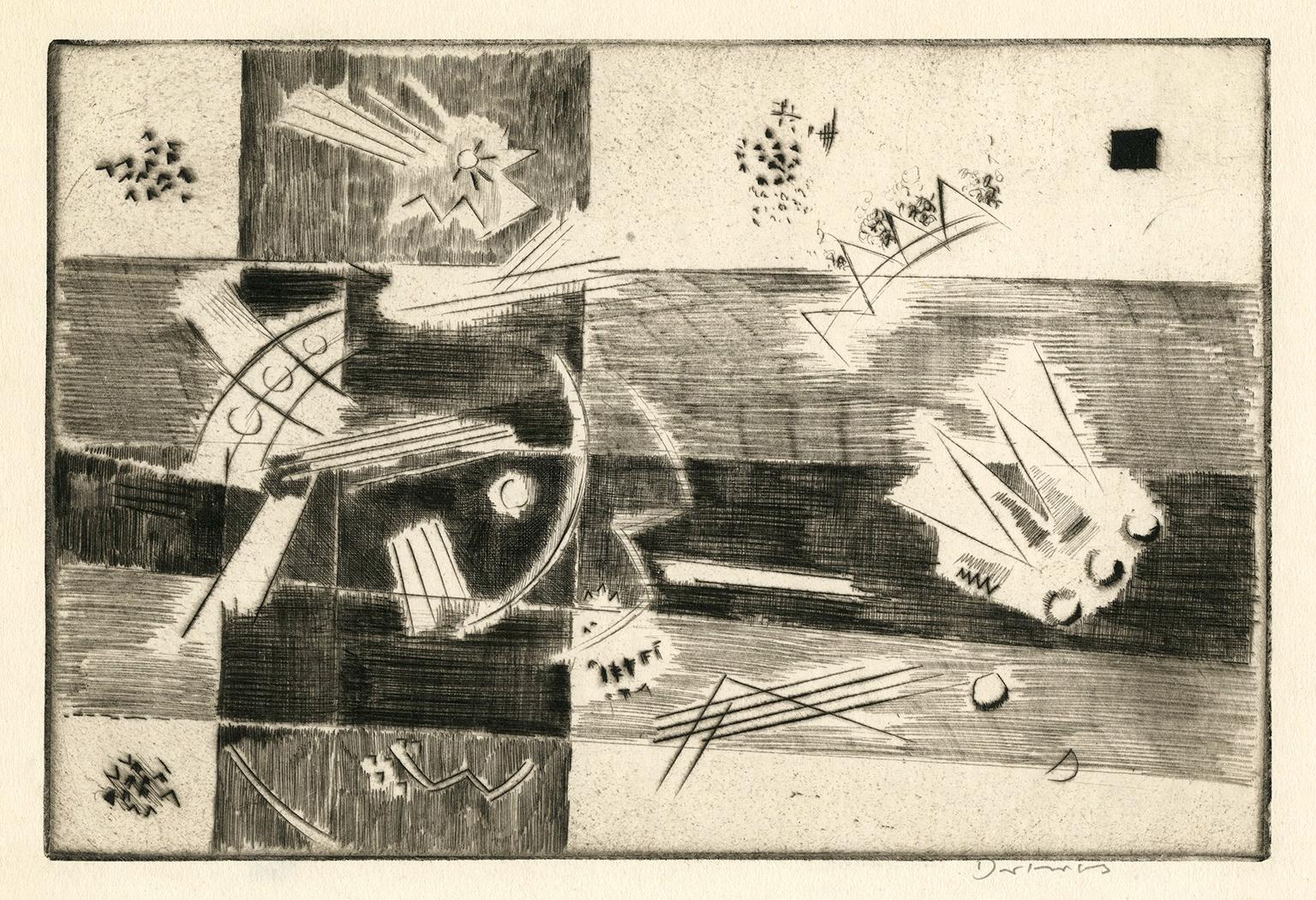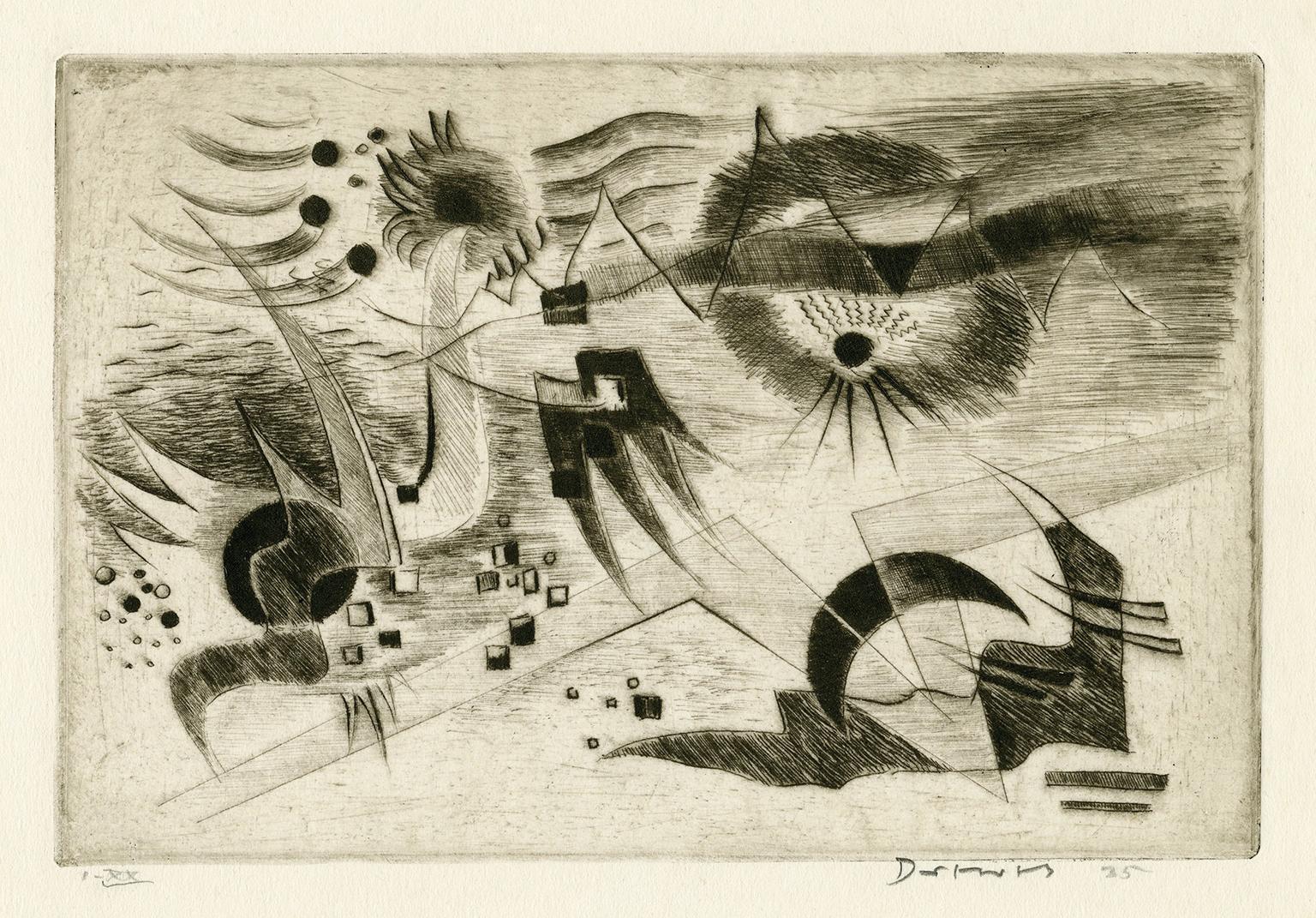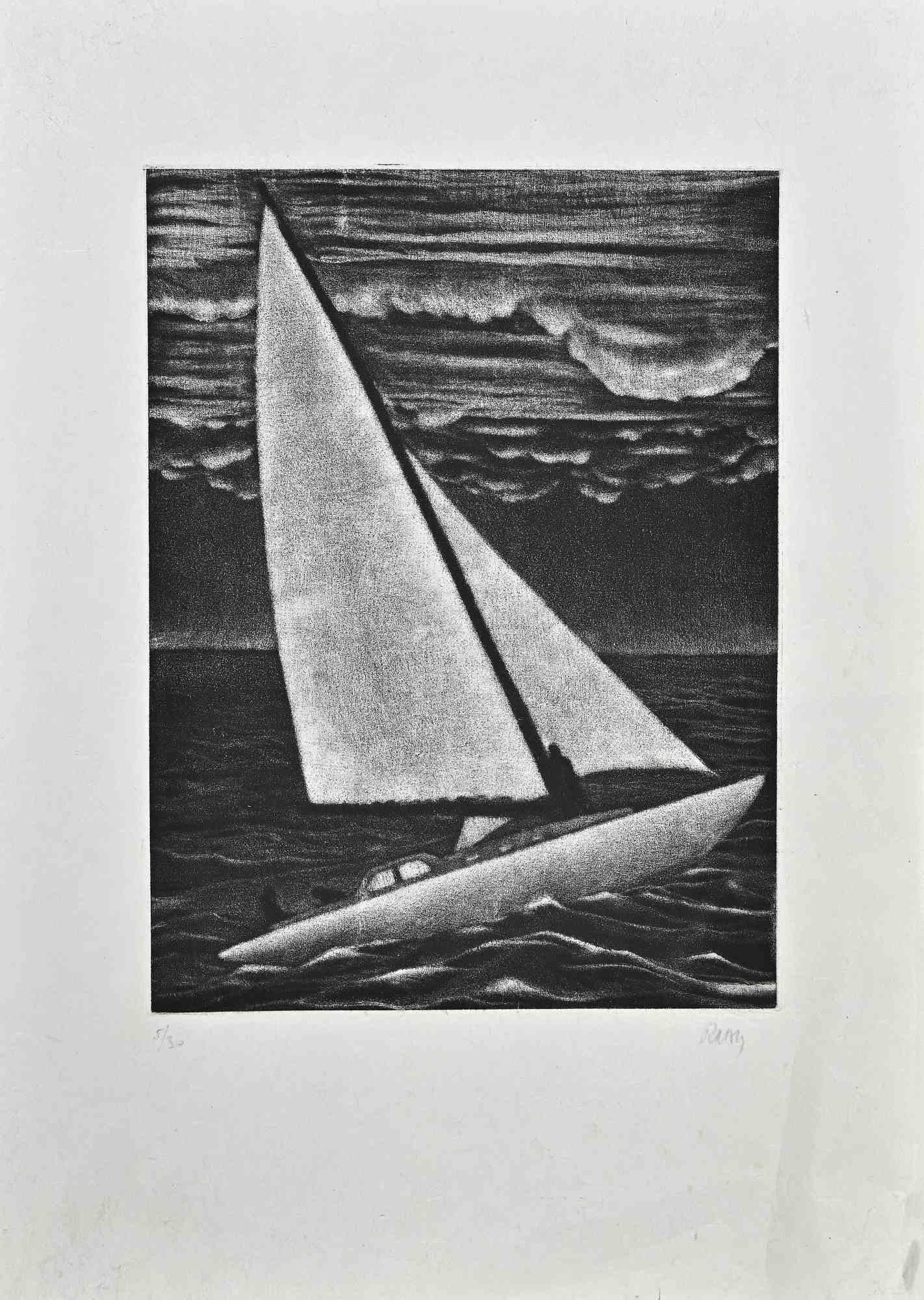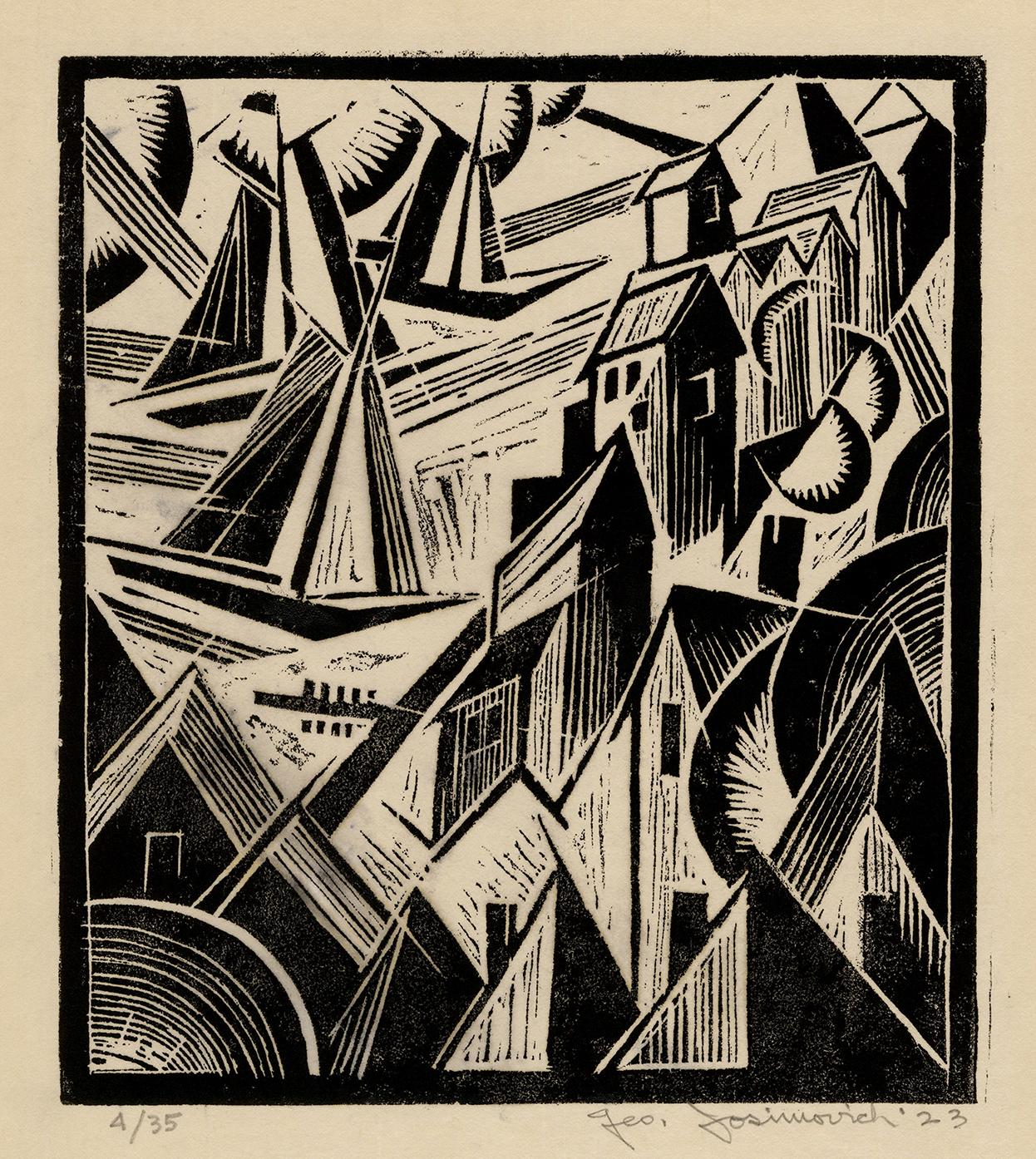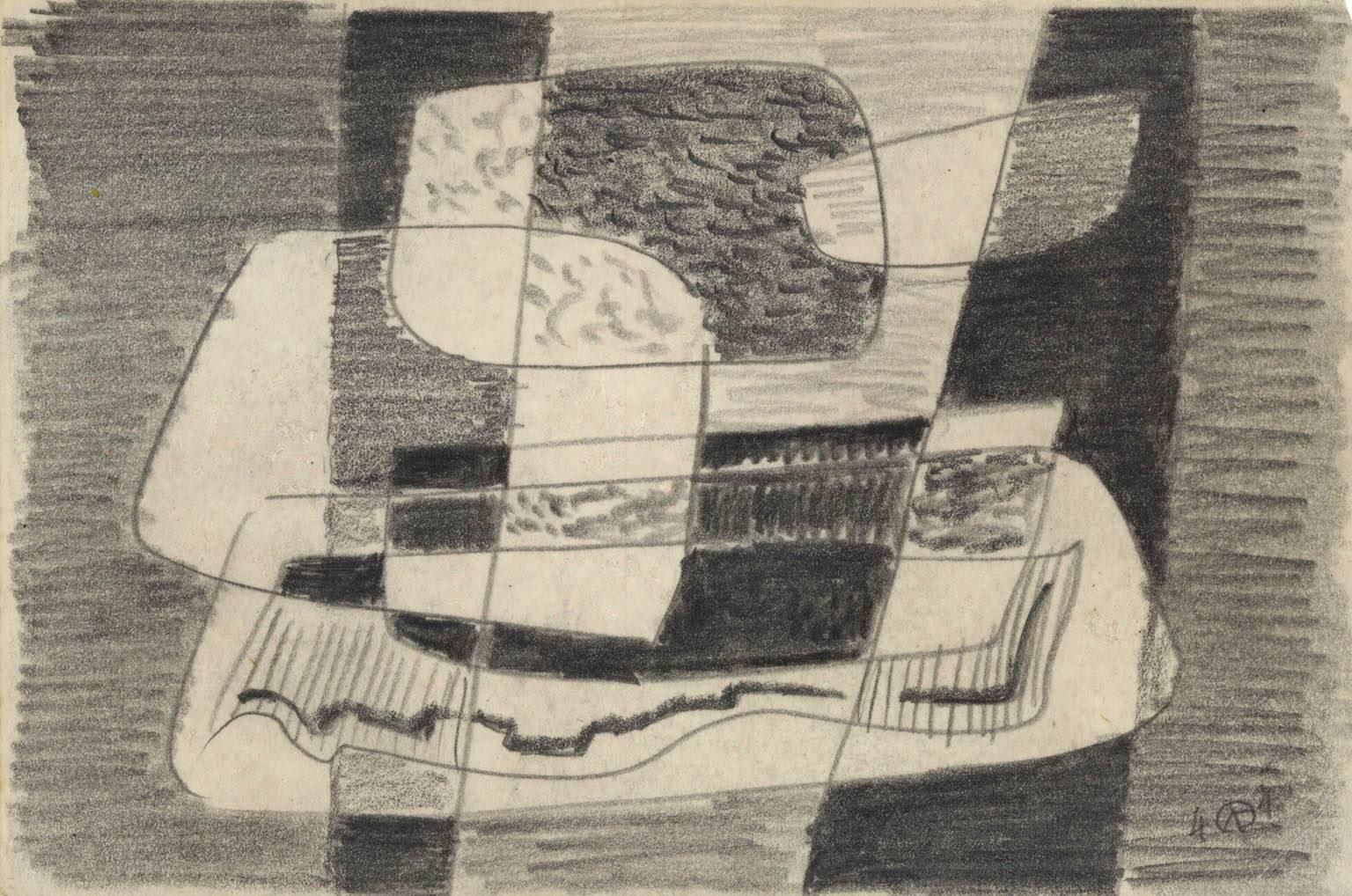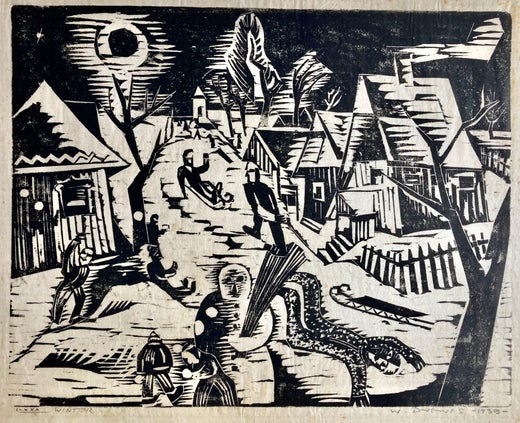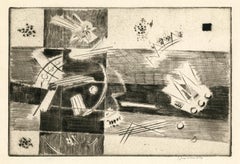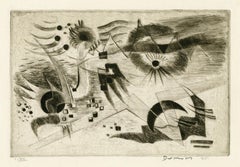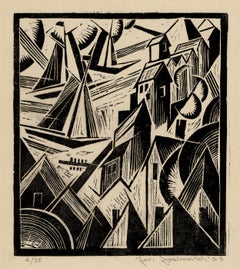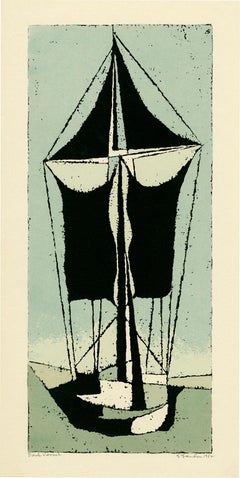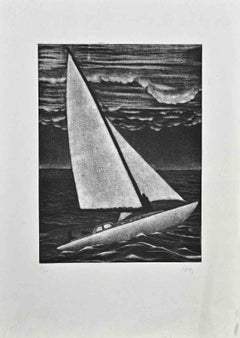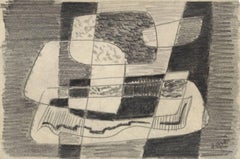Werner DrewesNew Rochelle - Before the Wind1931
1931
About the Item
- Creator:Werner Drewes (1899-1985, American)
- Creation Year:1931
- Dimensions:Height: 13.88 in (35.26 cm)Width: 10.88 in (27.64 cm)
- Medium:
- Movement & Style:
- Period:
- Condition:
- Gallery Location:Myrtle Beach, SC
- Reference Number:Seller: 1032771stDibs: LU53233865332
Werner Drewes
Werner Drewes was a painter, printmaker, and teacher, who was born in Canig, Germany, in 1899. His father, a Lutheran Minister, hoped he would become an architect, but Werner chose the life of an artist. After he served on the front line in France during the war, Werner was admitted to the Bauhaus in 1921, where he studied under Klee, Itten, and Muche. Later, he traveled through Europe to study such old masters as Tintoretto, Velasquez and El Greco. After marrying Margaret Schrobsdorff, they traveled throughout South America, North America and Asia. In 1930, Werner immigrated to New York City with his family. In New York City, despite the Depression, Werner joined other Bauhaus artists such as Piet Mondrian and Lyonel Feininger to make a living as an artist. This group became the core of the American Abstract Artists group. Werner taught at Columbia University, worked on the design of the 1939 World's Fair building, and had shows at the Museum of Modern Art, Kleeman Gallery, and elsewhere. In 1946, he accepted a tenured position at the Washington University in St. Louis. In his later years, he moved to Virginia and continued to show at galleries in Germany, Turkey, and in the United States. The Smithsonian held a show attributing his 65 years as a printmaker at the Museum for American Artists.
- ShippingRetrieving quote...Shipping from: Myrtle Beach, SC
- Return Policy
More From This Seller
View All1930s Bauhaus Abstract Prints
Drypoint
1930s Bauhaus Abstract Prints
Etching
1920s American Modern Figurative Prints
Linocut
Mid-20th Century American Modern Figurative Prints
Screen
1930s American Modern Figurative Prints
Woodcut
1930s American Modern Figurative Prints
Screen
You May Also Like
1930s American Modern Landscape Prints
Drypoint
Mid-20th Century Modern Figurative Prints
Drypoint, Etching
1940s Abstract Expressionist Abstract Drawings and Watercolors
Pencil
1930s American Realist Landscape Prints
Woodcut
Early 20th Century American Modern Landscape Prints
Woodcut
Mid-20th Century Abstract Abstract Prints
Lithograph
